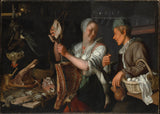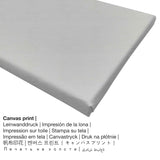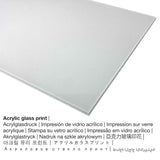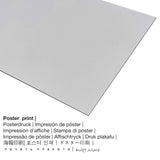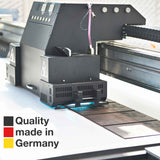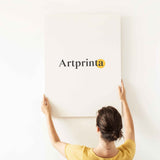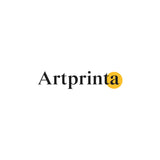Peter Wtewael, 1620 - Ebe nkiri kichin - mbipụta nka mara mma
Ụtụ gụnyere. Mbupu gbakọrọ na ndenye ọpụpụ.
Ihe osise a akpọrọ "Ebe nkiri kichin"dị ka akwụkwọ nka nke gị
a 17th narị afọ ọrụ nka bụ nke nwoke rụrụ Dutch artist Peter Wtewael. The original version of the masterpiece was made with the size: 44 3/4 x 63 inch (113,7 x 160 cm). Mmanụ na kwaaji was applied by the artist as the technique for the artwork. Today, this piece of art belongs to the digital art collection of The Metropolitan Museum of Art. With courtesy of The Metropolitan Museum of Art, New York, Rogers Fund, 1906 (nwere ikike: ngalaba ọha). Tụkwasị na nke ahụ, ihe osise ahụ nwere akara kredit: Rogers Fund, 1906. Ọzọkwa, alignment bụ na odida obodo format ma nwee oke nke 1.4: 1, nke pụtara na ogologo bụ 40% ogologo karịa obosara. Peter Wtewael was a painter, whose art style can mainly be assigned to Baroque. The European artist lived for 64 afọ - Amụrụ na 1596 wee nwụọ na 1660.
What does the original artwork description of the The Metropolitan Museum of Art write about the work of art painted by Peter Wtewael? (© Nwebiisinka - The Metropolitan Museum of Art - Museumlọ ihe ngosi nka nke Obodo)
Typical of Dutch genre paintings from the first half of the seventeenth century, Wtewael’s kitchen scene abounds in visual jokes of a frankly erotic nature, such as the prominent display of meat on a skewer. The grins of housemaid and errand boy indicate their enjoyment of one another’s company, while the lavishly depicted foodstuffs surrounding them allude to the pleasures of the flesh. Such combinations of risqué humor with abundant still life elements had deep roots in Netherlandish painting.
Nkọwa nka ahaziri
| Aha eserese ahụ: | "Scene kichin" |
| nhazi ọkwa: | sere |
| Otu sara mbara: | nka ochie |
| Time: | 17th narị afọ |
| Emepụtara n'afọ: | 1620 |
| Ogologo afọ nka nka: | 400 afọ |
| Usoro nka izizi: | mmanụ na kwaaji |
| Akụkụ nke nka nka izizi: | 44 3/4 x 63 inch (113,7 x 160 cm) |
| Ụlọ ihe ngosi nka: | Museumlọ ihe ngosi nka nke Obodo |
| Ebe ebe ngosi nka: | New York City, New York, Njikota Obodo Amerika |
| Weebụsaịtị nke ihe ngosi nka: | Museumlọ ihe ngosi nka nke Obodo |
| Ikikere nke ihe osise: | ngalaba ọha |
| Site n'aka: | Ụlọ ihe ngosi nka nke Metropolitan, New York, Rogers Fund, 1906 |
| Ebe E Si Nweta: | Rogers Fund, 1906 |
metadata nka nka
| Ihe nkiri: | Peter Wtewael |
| Gender: | nwoke |
| Obodo onye nka: | Dutch |
| Ọrụ nke onye na-ese ihe: | onye na-ese ihe |
| Obodo obibi: | mba netherland |
| Nkewa onye nka: | nna ukwu ochie |
| Ụdị nke onye na-ese ihe: | Baroque |
| Nwụrụ anwụ: | 64 afọ |
| Amụrụ n'afọ: | 1596 |
| Nwụrụ n'afọ: | 1660 |
Họrọ ụdị ngwaahịa ngwaahịa
Nchịkọta nhọrọ ngwaahịa na-enye gị ohere ịhọrọ nha na akụrụngwa masịrị gị. Họrọ nha na ihe kacha amasị gị n'ime nhọrọ ndị a:
- Mbipụta akwụkwọ mmado (ihe kwaaji): Our poster is a printed canvas with a slightly roughened surface finish. Please note, that depending on the absolute size of the poster print we add a white margin of approximately 2 - 6cm round about the work of art in order to facilitate the framing with your custom frame.
- Bipụta na iko acrylic na-egbuke egbuke (nke nwere ezigbo mkpuchi iko): A glossy acrylic glass print, which is sometimes named as a UV print on plexiglass, transforms the original work of art into brilliant décor. Additionally, the acrylic glass fine art print makes a good alternative to canvas or dibond art prints. Your own version of the work of art will be manufactured with the help of state-of-the-art UV print machines. With an acrylic glass fine art print contrasts as well as smaller details become more exposed because of the granular tonal gradation. Our plexiglass with real glass coating protects your selected art replica against light and external influences for several decades.
- Kwaaji: A canvas direct print is a printed canvas mounted on a wooden frame. The advantage of canvas prints is that they are relatively low in weight, meaning that it is easy to hang up your Canvas print without the support of additional wall-mounts. Canvas prints are suitable for all types of walls.
- Mbipụta aluminom (aluminium dibbond): Aluminium Dibond prints are metal prints with an impressive depth effect. The non-reflective surface structure make a fashionable look. A direct Aluminium Dibond Print is the excellent introduction to fine art reproductions manufactured on aluminum. The white & bright parts of the original work of art shimmer with a silk gloss, however without the glare.
Banyere ngwaahịa
| Nkewa edemede: | nka nka |
| Mmeputakwa: | mmeputakwa n'ụdị dijitalụ |
| Usoro mmepụta: | UV kpọmkwem obibi |
| Mmalite nke ngwaahịa a: | German mere |
| Stockdị ngwaahịa: | a na-achọ |
| A na-atụ aro iji ngwaahịa eme ihe: | foto mgbidi, gallery mgbidi |
| Ndepụta: | nhazi odida obodo |
| Oke akụkụ: | 1.4: 1 ogologo ruo obosara |
| Mmetụta nke akụkụ akụkụ: | ogologo bụ 40% ogologo karịa obosara |
| Ụdị ihe dị iche iche dị: | Mbipụta kwaaji, mbipụta enyo acrylic (nwere ezigbo mkpuchi iko), mbipụta akwụkwọ mmado (akwụkwọ kwaaji), mbipụta ọla (aluminium dibbond) |
| Mbipụta kanvas (akwa akwa na etiti ihe ndọtị) dị iche iche: | 70x50cm - 28x20", 140x100cm - 55x39" |
| Mpempe iko acrylic (nwere ezigbo mkpuchi iko) nha: | 70x50cm - 28x20", 140x100cm - 55x39" |
| Nhọrọ nke mbipụta akwụkwọ mmado (akwụkwọ kwaaji): | 70x50cm - 28x20" |
| Nhọrọ nha nke mbipụta aluminom (aluminium dibond material) | 70x50cm - 28x20", 140x100cm - 55x39" |
| Igwe onyonyo: | na-enweghị etiti |
Disclaimer: We try whatever we can in order to depict the art products as clearly as possible and to exhibit them visually in our shop. However, the colors of the printing material, as well as the imprint can differ somehwat from the image on your device's screen. Depending on the screen settings and the condition of the surface, not all color pigments can be printed as realistically as the digital version shown here. Since the art reproductions are printed and processed manually, there may as well be minor discrepancies in the size and exact position of the motif.
© nwebisiinka, www.artprinta.com (Artprinta)

